The Ruins of Polonnaruwa, Part II
Book Your Polonnaruwa Hotel Here
Exhausted from a morning spent exploring Polonnaruwa’s massive archaeological site, we sat down for a much-needed break. I leafed through our guide book, and took a big gulp. We had already seen a lot, but weren’t even midway through. And the ruins which remained threatened to be even more amazing.
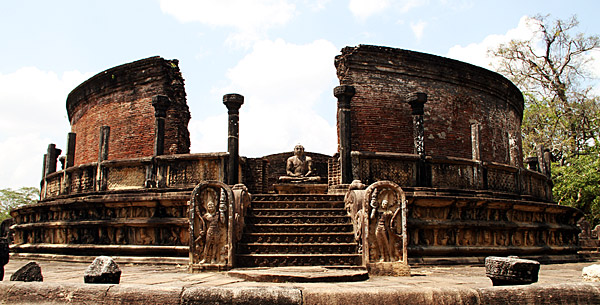
After passing the Rankot Vihara, a large but slightly misshapen stupa just south of the Buddha Seema Pasada, we headed east on a side road to arrive at the Shiva Devale #2. This is the oldest structure in the city, and looks it. Built during a brief period of Indian dominance in Polonnaruwa, the small round temple dedicated to Hindu’s “destroyer of evil” is totally out-of-place in the otherwise Buddhist city. Nearby is the more typical Pabalu Vihara, another brick dagoba tucked away in a pleasant little clearing, built under the order of the Queen.
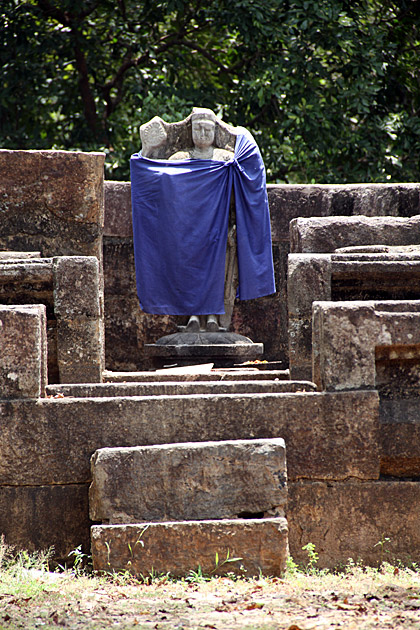
We now skipped to the southern end of the ancient city to visit the citadel, which was King Parakramabahu’s palace. Along with the palace remains were administrative buildings protected by a heavy, meter-thick rampart. A guard told us that the palace itself had been seven stories high, with a thousand rooms — though this was almost certainly a bit of patriotic hyperbole. The royal bath is the most impressive remaining feature.

Having saved the best for last, we biked to the raised square platform of the Quadrangle. The most impressive building here is the Vatadage, which is a 12th century circular temple considered by many to be the greatest of Sri Lanka’s ancient artistic treasures. The first of the Vatadage’s round terraces is completely covered in decoration: lions, midgets, lotus leaves, and a long inscription giving credit for the building to the crafty King Nissankamalla (it was actually constructed during Parakramabahu’s reign). A second platform includes beautiful guardstones and stone steps which lead to the remains of a small dagoba.

Next the Vatadage, we found the Gal Pota, or stone book, which was another of Nissankamalla’s egotistical tricks. This giant block was brought from Mihintale, polished and inscribed with a breathless catalog of the King’s wondrous achievements (most of them probably false). We also saw the Hatadage, which served as Temple of the Tooth while Polonnaruwa was capital. Then, a strange six-storied temple called the Satmahal Prasada, which doesn’t fit in at all with Sri Lanka’s Buddhist architecture, and is thought to have been the work of Malaysian architects.

All that was just on the eastern half of the Quadrangle. By the time we made it to the western half, we were running low on energy and enthusiasm, and paid short shrift to ruins like the Lotus Mandapa with its oddly bent columns. We spent 0.38 seconds admiring a life-size statue of Vijayabahu, and darted in and out of the Thuparama, which is the only image house in Polonnaruwa that still has its original roof.
Take a look at the first part of our exploration of the ancient city, and then tell me that this wasn’t a lot to see in a single outing! We had four full days in Polonnaruwa and would have loved to split up the sight-seeing, but (insanely) the tickets were only valid for one day. It would have cost us another $50 to see the monuments at a more human pace. No way.
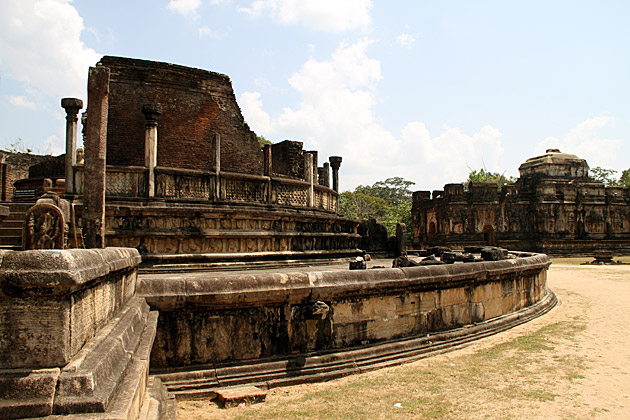
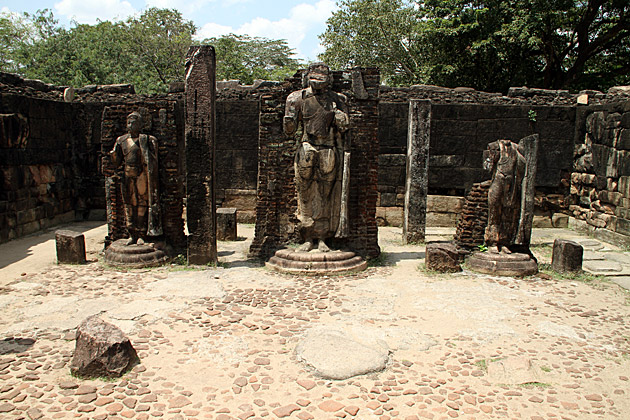
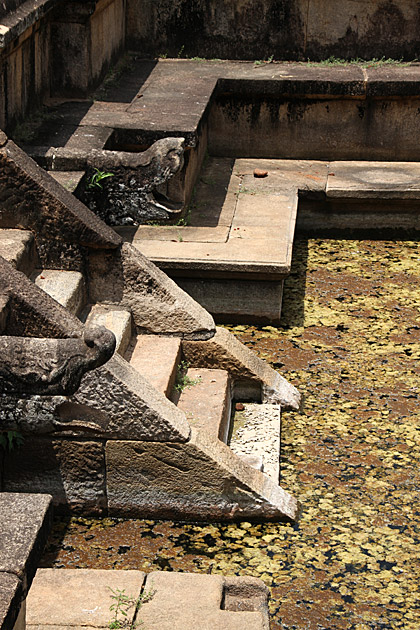
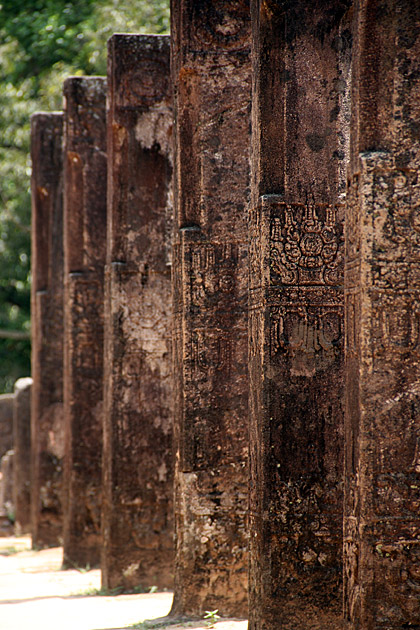
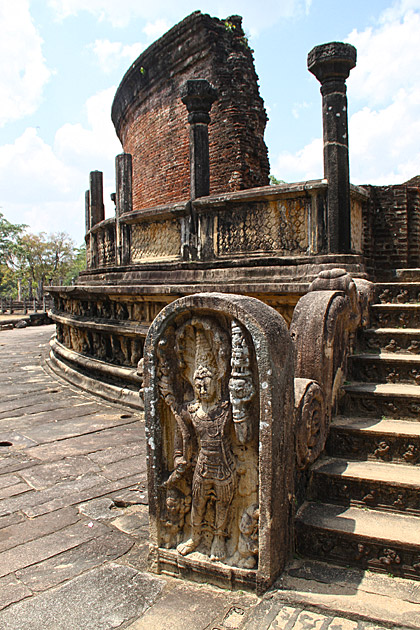

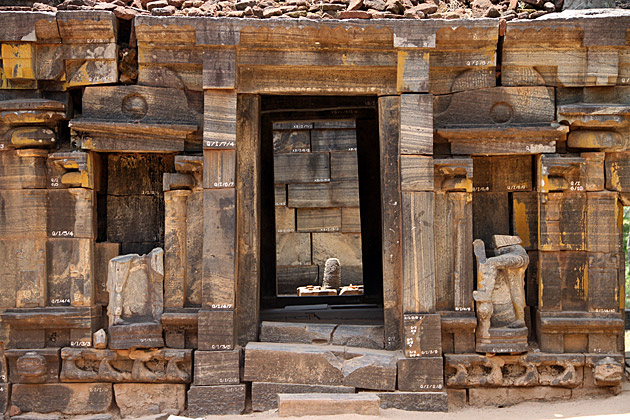
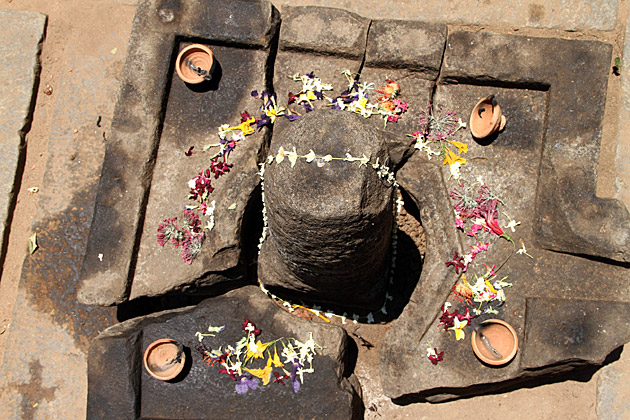
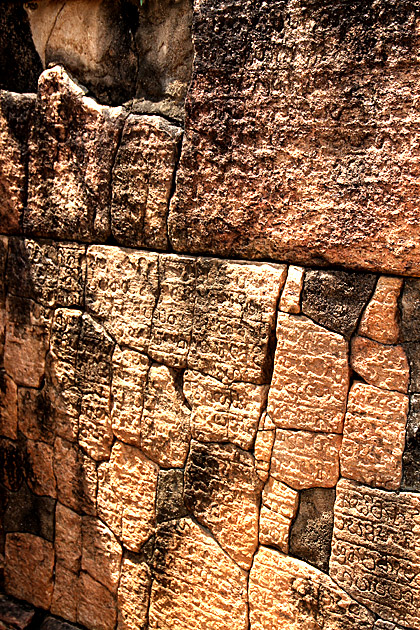

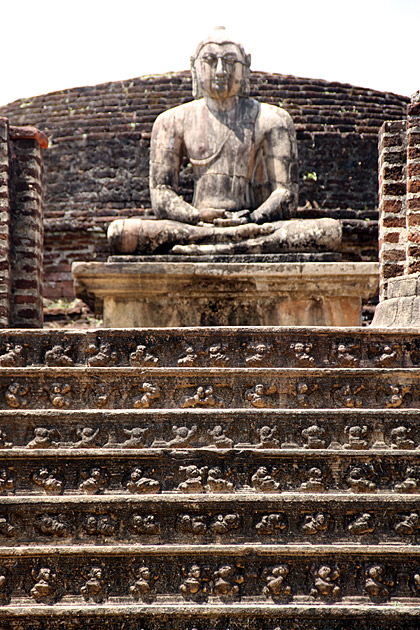
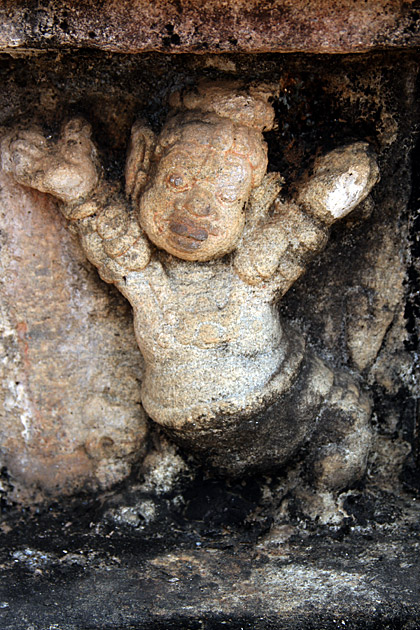

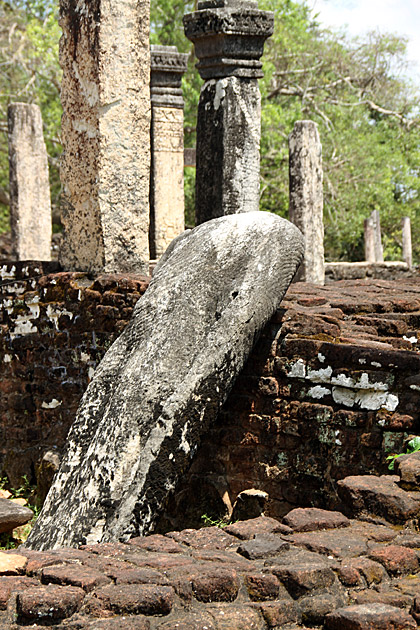
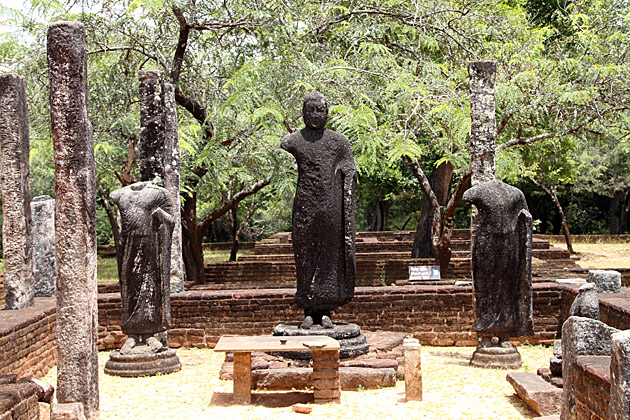
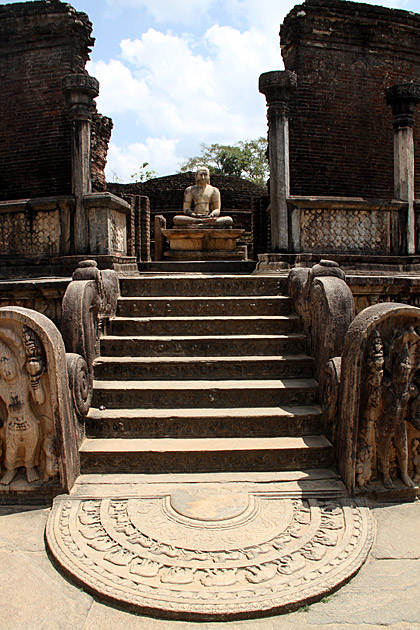



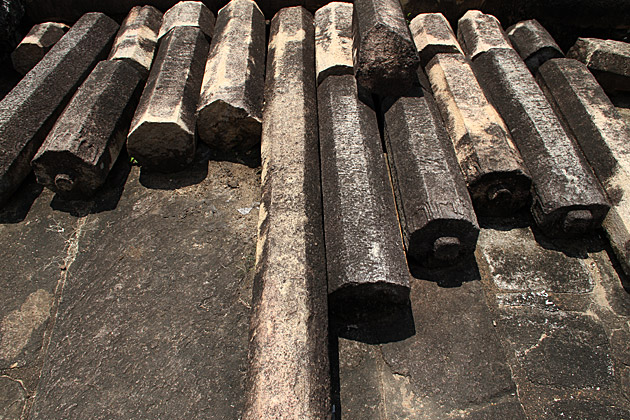
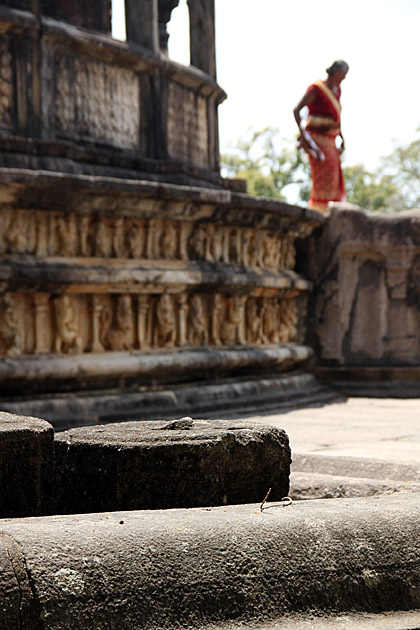


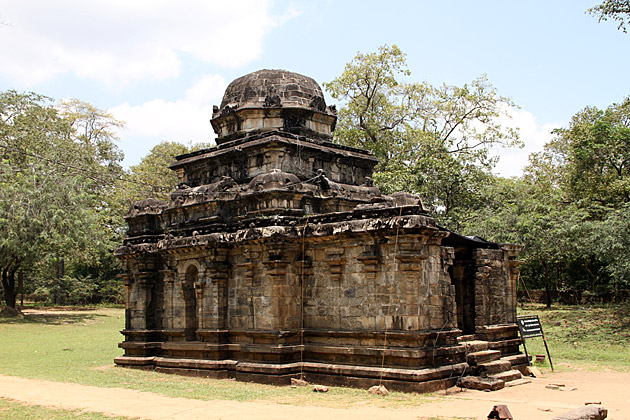


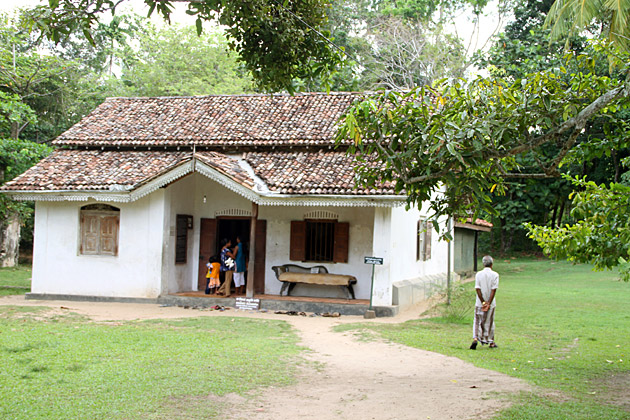
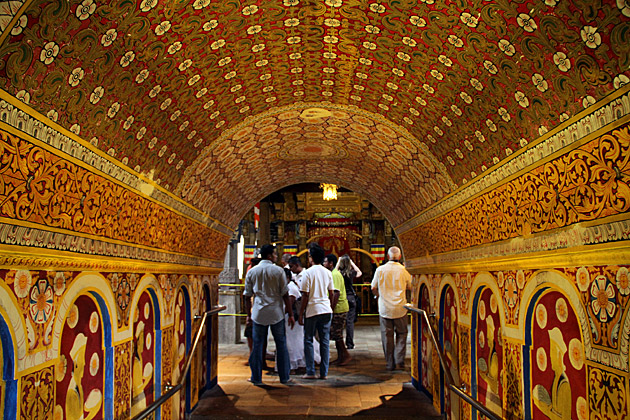
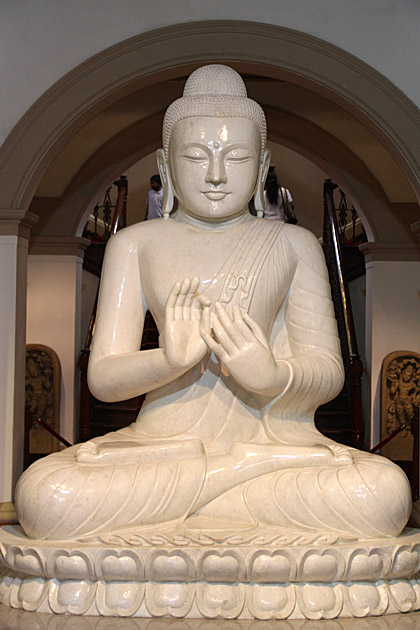
Hi, I have enjoyed reading your blog and have found it very useful as I am planning a trip to Sri Lanka this winter.I have saved all (I think) of your posts to refer to at different stages of my trip, so I may come across the answer to this question, but if I don’t: what did you do for the other three days that you were in Polonnuruwa if you did all the sights in one day? You see, I’m still in the itinerary-building stage of my trip and this will be helpful.Thanks in advance,Lisa